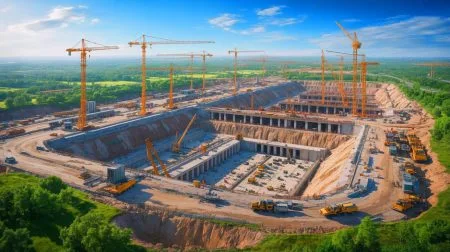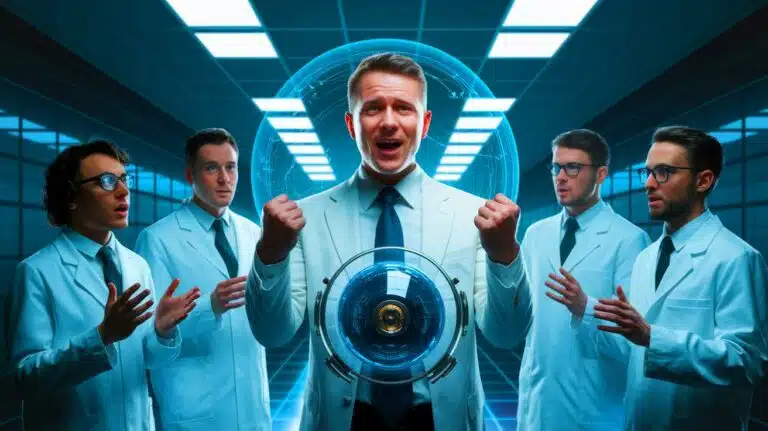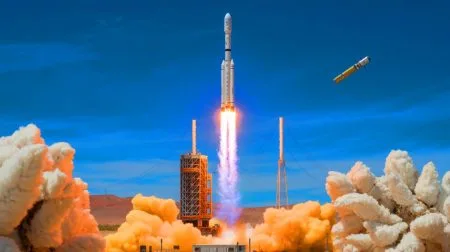| IN A NUTSHELL |
|
In an extraordinary breakthrough, a new propulsion technology has emerged that could potentially revolutionize space travel. This innovation, claimed to defy the established laws of physics, has left the scientific community in awe and skepticism. The invention suggests generating thrust without the need to expel propellant, challenging long-held principles in physics. While this development could pave the way for groundbreaking advancements in manned space exploration, it also raises significant questions and doubts among experts.
The History of the EmDrive and Lingering Skepticism
The concept of a propellantless engine isn’t entirely new. Back in 2001, British electrical engineer Roger Shawyer introduced the infamous “EmDrive,” often dubbed the “impossible engine.” This device claimed to produce thrust without any reaction mass, thereby defying the law of conservation of momentum. Despite the initial excitement, subsequent studies, particularly in 2021, concluded that the EmDrive held no scientific merit. Such precedents underscore the necessity for independent verification of extraordinary claims.
The skepticism surrounding propellantless engines persists due to the lack of empirical evidence supporting their feasibility. Scientists and engineers emphasize the importance of rigorous testing and validation to ensure that these claims stand up to scientific scrutiny. As history has shown, the allure of groundbreaking technology often collides with the harsh realities of physics, necessitating a cautious approach to revolutionary claims.
Charles Buhler’s Bold Gamble
More recently, Charles Buhler, an ex-NASA engineer and co-founder of Exodus Propulsion Technologies, unveiled an electrostatic engine based on what he calls the “New Force.” He asserts that this engine can overcome Earth’s gravity through an asymmetry in electrostatic pressure or a divergent electrostatic field. Although his research is not officially affiliated with NASA, his team includes experts from NASA, Blue Origin, and the Air Force, all aware of the environmental impacts of space technologies. This group has been working for decades on propellantless engines.
Buhler’s claims have sparked interest and debate within the scientific community. His team’s interdisciplinary expertise lends credibility to the endeavor, yet the lack of formal NASA backing highlights the speculative nature of the project. If successful, Buhler’s innovation could lead to more sustainable and efficient space travel, reducing the reliance on traditional chemical propulsion systems and minimizing environmental impact.
Scientific Presentation and Implications
The discovery was showcased at the Alternative Propulsion Energy Conference (APEC), a gathering of engineers and enthusiasts eager to push the boundaries of gravity and physics. According to Buhler, this technology allows electric fields alone to generate continuous force on an object without expelling matter. He hopes that companies will seek licenses to employ this innovative technique.
In 2023, after extensive research, the engine successfully produced sufficient thrust to counteract Earth’s gravity. Tests conducted from early 2022 until November 2023 confirmed this milestone achievement. It’s important to note that current prototypes weigh between 1.06 and 1.41 ounces, underscoring the potential for scalable applications. This advancement could redefine the future of space travel, offering new avenues for exploration and commercialization.
Towards Scientific Validation?
While initial results are promising, rigorous scientific verification is now imperative. The history of propellantless engines is replete with examples where seemingly promising results proved disappointing following meticulous testing, as was the case with the EmDrive.
Buhler himself acknowledges, “Nature has its own ways of doing things, and it’s our job to discover what it does.” He also hopes that these devices can be tested in space to explore their full potential. If this technology is validated through research, it could unlock new possibilities for commercial space exploration. However, each step must be closely examined to ensure a comprehensive understanding before considering widespread application.
As we stand on the brink of a potential paradigm shift in space propulsion, the world watches with bated breath. Could Charles Buhler’s groundbreaking invention truly alter the landscape of space exploration, or will rigorous scientific scrutiny reveal its limitations? Only time and thorough investigation will tell. What impact could such a technological breakthrough have on the future of space travel and our understanding of the universe?
Did you like it? 4.4/5 (23)








Wow, if this is real, we’re living in a sci-fi movie! 🚀
Where’s the video
Can this technology be adapted for everyday use, like in cars or planes?
It NOT REAL so the answer is no.
This was announced years ago and has been debunked. It was a grounding error
This was done by Thomas Towsend Brown back in the 1950s. It’s called the Biefield-Brown effect. There are patents issued on this from the 50s.
Awesome,great reply based on zone facts😅
Was Elon Musk involved in any way? 😂
No
That cocksucking imbecile probably had something to do with it.
Elon ate dung in Africa.
Strange you would disparage EM . I use PayPal, drive a tesla, use some digital currency, am very happy SpaceX brought 2 astronauts back from the iss…butler has a history of getting good people to work on abstract projects. So far, without success.
Is the scientific community taking this seriously or is it just hype?
Sounds like the EmDrive all over again. I’ll believe it when I see solid proof.
It’s not anti-gravity… It doesn’t violate physics… Go read Buhler’s actual words. It’s a form of electrostatic propulsion with some promise for extremely lightweight applications. Cool stuff, but everyone needs to settle down.
The EM drive was validated by NASA and found to be valid.
It is not a gravity drive, it is is a gravity canceling drive. Do your research.
What are the environmental impacts of this new technology?
At last, a way to beat those annoying laws of gravity! 😄
If this works it would revolutionize EVERYTHING.
love seeing ai slop pictures on my home screen, nice cover photo of cool real scientists.
Charles Buhler and his team deserve a Nobel Prize if this is true!
How long before we see this tech being used commercially?
What are the potential risks associated with this invention?
Gravity? Never heard of her. 😏
Thank you for keeping us informed about these incredible developments!
This better not be another elaborate hoax. 😒
Does this mean we can finally have flying cars? 🚗✈️
We already have them, they are called helicopters.
How can I get involved in testing or supporting this technology?
Get a degree in applied physics with a specialty in electrodynamics
Hope science doesn’t dismiss this too quickly. We need to explore all possibilities.
Any connection to the theories proposed by Nikola Tesla?
This could change everything! Thanks for sharing this amazing news. 🙌
I’m intrigued! How soon can this technology be scaled up?
This is psychotically overhyped. We’ve already known you could do this like everybody already knows you can do this the problem is that it doesn’t produce like any thrust and you could move like a toaster very very slowly in space but you couldn’t get anything off the ground it would take literally hundreds of years to get up to any like useful velocity you could not escape the solar system ever…. I don’t like…. what is going on in this article
Like totally
If you don’t like what is being said then leave m@#$%#F$ck3r
Are there any reputable scientists backing this claim?
I’m just waiting for the “April Fools” announcement at this point. 🤔
Does the invention have any applications for renewable energy?
How does this impact our current understanding of physics?
What does NASA think about this? Are they on board?
They already have been dealing with this back in 2018. I guy named Franklin Diaz Chang had protypes being tested. This sounds like a continuation of that work.
Are there any videos of the live demo available?
Thank you aliens!
How does this “New Force” actually work? Seems too good to be true.
Is there a chance this technology could be weaponized? 😬
What BS is this and why is there an AI generated image titled as being the actual “scientists” presenting their findings. Who runs this website, RFK?
Always
If you are going to write an article with gpt, maybe don’t use AI art as well to make it so painfully obvious.
I’m skeptical but hopeful. We need dreams to push science forward.
I get that the contents of this article are legit, but this entire article was clearly made with ChatGPT
The questions asked here. Remind me of questions that HR approves for a company meeting. LOL!
This is ai slop
These comments are obviously AI driven. A single line, a single thought, nothing attracting or detracting from the discussion. Prove me wrong. Gee, I might be an AI.
This is old technology, Starship Enterprise has been using it for years!
🤣
Actually that would also involve creating a warp bubble via the Casimir effect, which was accidentally discovered in 2022(warp bubbles were accidentally discovered). Now they are focusing on how to create one on a larger scale. Google how fast you can get to Proxima Centauri on 1G of propulsion without the warp bubble. Then google with the warp bubble. They just need to upscale things and finish figuring out fusion energy and possibly throw in some antimatter. Then we are good to go anywhere in the Universe within a lifetime. Sounds more Stargate-ish than Star Trek-ish but we are getting there.
Only real way to make a propellantless drive is as follows. It would require that all gravitational forces be reflected from one side and then with time and gravity only pulling it from the front it would continue to accelerate. Gonaheaf and figure it out …
Thomas Townsend Brown had this worked out early 20th Century. This is not new.
Thanks I’m very interested I’m now 53 and strive on my inventions sins I’ve been 16….now that I can use. My selfone as a dictionary everything get easier….watch this space…..u’ll get to hear from me soon
An article that says nothing
Im calling hoax. It would be so easy to prove to the world that it works. Considering how long ago this was announcing , I call shenanigans.
God bless. This would be real UFO technology. Like buhler said, nature has its ways. Video example of this anti gravity technology would set the truth free. Like when self driving cars were introduced. Fascinating. Amazing. Inspiring.
i call bullshit until they have a working demo. until then its just vaporware.
The two scientists on the left have three arms between them. Bad CGI.
God bless. This is real UFO technology. Nature has its ways like Bhuler said. Video example of this would set the truth free.We’ll see this technology come to light like self driving cars. Surprising. Amazing. Inspiring.
I hate these articles. Who pays for these dumb articles to be written?
Nobody. They’re AI generated slop.
Yay. More clickbait.
Open the door to knowledge by imagining all there is which we don’t know.
Please God – Why?
It seems that; yes, contrary to accepted wisdom, there ARE stupid questions. Many of them are written above. Reading them will cause insanity and blindness. I had to stop – the level of education or comprehension requirements is low for something like this, and still the crayon munchers demonstrate immunity to reason.
But to title this with “I Beat Gravity” was lunacy. It does fulfill the requirements for clickbait. I can’t print the rest.
Most em-drives are actually accelerating the air around them to generate thrust. That’s not going to be very effective in space.
I’ll keep my parachute at the ready !
Iv’e got one similar using magnets instead. Please send me money
Testing such devices here on earth, requires such tests to be performed within a vacuum chamber, but to the fact em drives or electrostatic drives moves the air around it to generate thrust. This is great for aircrafts, but for space craft nearing space wheir the air is null, such devices lose significant performance! Making rockets usless. If they achieve significant propulsion in a vacuum on earth as well as the atmosphere, and if the scale of the engine increases its performance to lift its added weight, then count me in as an investor for building spacecraft using this engine. But if it fails to meet these. Then IllI need to speak and study the concept to identify exactly what it’s doing to create any thrust
We’ll know if this is true by whether the inventor suddenly disappears.
100%Todd.
There have been countless actual free energy devices that have been seized as a threat to national security and if the invented doesn’t stay quiet they seem to stop breathing all of a sudden🤔
Sustainability times should not use AI generated images in news articles. As soon as I see an AI generated image I now have to doubt that this article and by extension any article on this site was ever written by a person. No offense to the great journalists on their staff but especially with an article like this where the title is not just stretching the truth but is a flat out lie it throws doubt on the entire organization. The headline is not just misleading to draw interaction but a flat out lie with no “live demo” mentioned in the entire article there is not even a prototype or schematics.
If you don’t like what is being said then leave m@#$%#F$ck3r
Well,if it’s true the cia will quickly have it shelved as a threat to national security like the countless other inventions that are 100%real and produce nearly limitless clean energy.
How much further humanity would be if we were allowed access to real science rather than the company funded bias science our schools and universities are allowed to teach😔